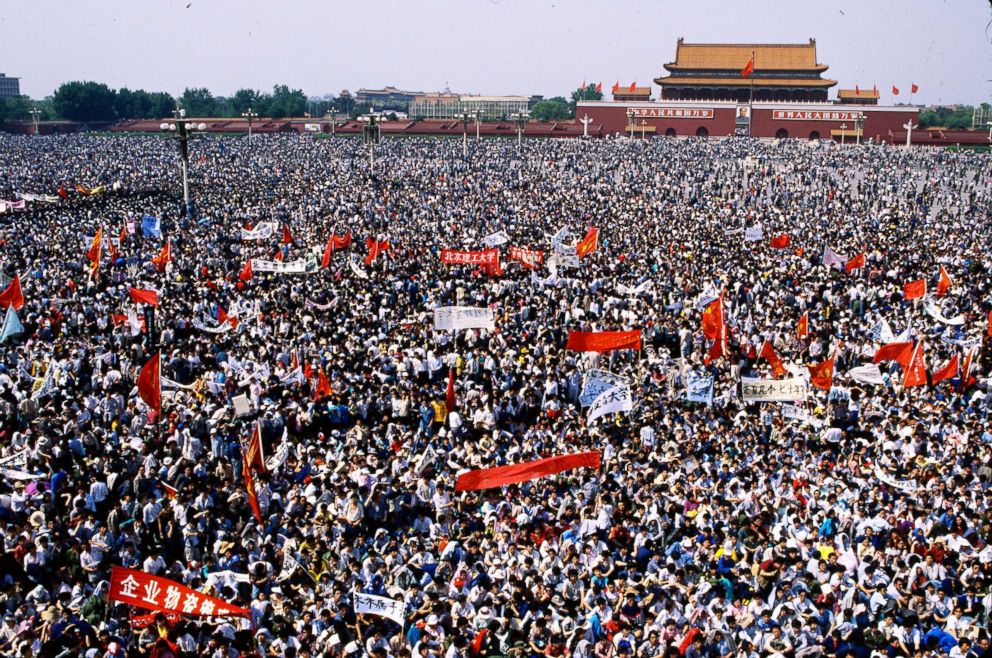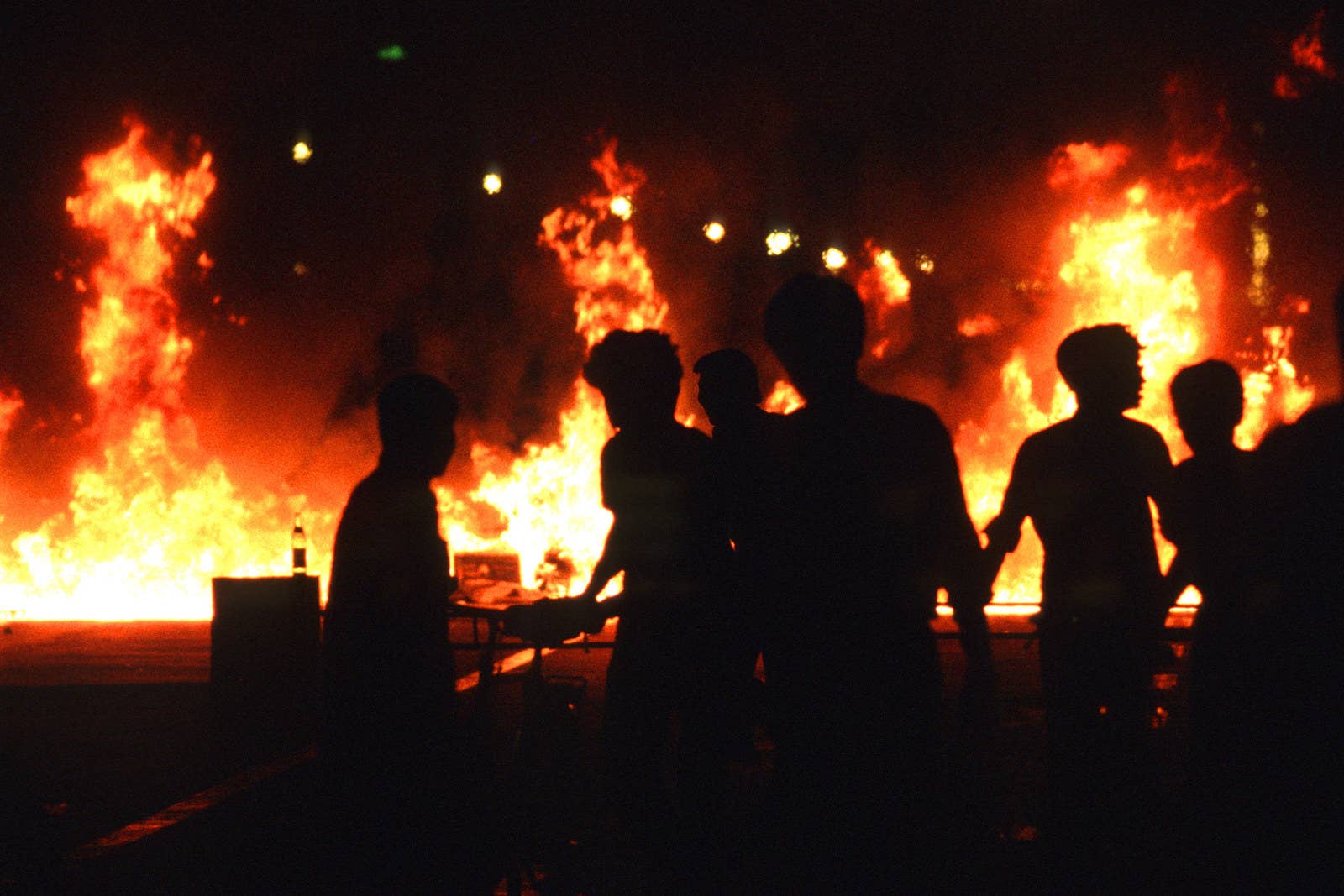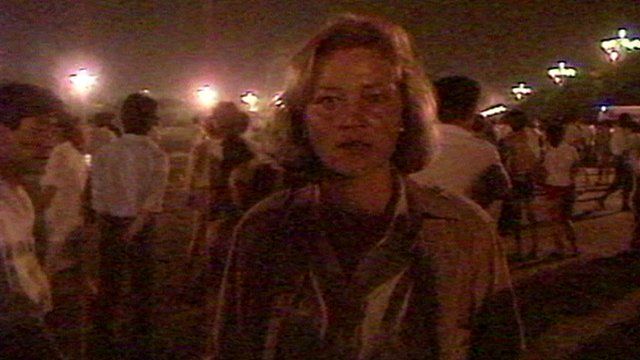We start in Poland. The 1980s had not been kind to Poland. In the early 1980s, the first free trade union in the Eastern Bloc, Solidarity, had risen from a shipyard strike in Gdansk. Headed by the charismatic electrician Lech Walesa, they challenged the communist regime by their very existence. Within a year, 1/3 Polish adults was a member of Solidarity. This led the military to step in and seize power, outlawing Solidarity and sending it underground.
Yet this show of force could not save the communist regime. By the mid 1980s, the economy was in crisis, and the government realised it needed the help of the opposition to get any reforms through. Solidarity re-emerged from the shadows, and went into negotiations. By early 1989, the Round Table Talks had agreed to hold elections with an element of competition, the first in Eastern Europe since the late 1940s. However, the system was rigged to ensure communist domination continued. Only 35% of the seats in the Sejim, and the entire Senate, were to be actually elected. The remaining seats were guaranteed for the communists and those political parties they allowed to exist.
Solidarity didn't hold out much hope for this show of democracy. Walesa later said he'd only gone along with it to regain legal status. There was no way that they could win outright anyway. But they went ahead and campaigned anyway.
'High Noon' - Solidarity election poster, 1989
But Poland's hatred of communist rule ran deep. On election day, they delivered a surprise. All 35% of the contestable seats were swept by Solidarity. Some ruling party communist candidates, despite sitting in 'guaranteed seats,' failed to cross the minimum threshold for being elected. The fellow travellers also lost ground. The first genuine electoral test of communism in more than forty years had found it wanting.
Solidarity had not won a landslide victory. But they had brought real democratic politics to Poland, and that was far more important. Over the summer, the parties sat down to negotiate their way out of this mess. The communist linked parties saw which way the wind was blowing. When the Sejim met in August 1989, the Solidarity activist Tadeusz Mazowiecki was elected as Prime Minister. He was at the helm of the first non-communist government in Eastern Europe since before the Second World War.
The Polish elections of June 1989 sent a shockwave through the Eastern Bloc. When others had dared to even step towards the exit, like Hungary in 1956, and Czechoslovakia in 1968, the response had been Soviet military intervention. Now, the reforming government of Mikhail Gorbachev announced it would not do so- The Sinatra Doctrine, as Gorbachev called it- I did it my way. With the fear of the Red Army gone, and an example that it could be achieved now starting work in Poland, the other communist regimes began to collapse. By the end of 1989, not a single one would remain in office.
How differently all this could have been. In our rush to praise the seemingly inevitable rise of democracy, we forget how else it could have turned out. As the sun came up on a Poland where the communist regime had been dealt a mortal blow, in China the long night was at its darkest.
In mid April 1989, Hu Yaobang, a reform minded leader of the People's Republic of China, died. His funeral was used as a focal point for those who wanted to protest at the lack of democracy in communist China. A ragtag coalition of students, workers, and pro-democracy activists began to maintain a protest camp in Tiananmen Square, in the very heart of Beijing. As the USSR started to open up to the rest of the world, under the twin banners of glasnost and perestroika, many in China wondered, why not us?
They caught the attention, partly of the watching world, but also of millions within China. Protests spread to other cities. For a fleeting time, it looked as if the People's Republic of China would join the momentous changes of 1989, and that, at the very least, communism in China would change to be more open.
Tiananmen Square, sometime in April or May 1989
But the heirs of Mao were not going to go down without a fight. As the weeks stretched into months, they realised that their only option was to use force against the students. Unlike the leaders of Eastern Europe, they were prepared to turn the armed forces against their own people to remain in power. But even then, problems arose. Units from outside Beijing had to be brought in, as some members of the People's Liberation Army were not trusted to shoot at their own side.
What happened in Beijing on the night of June 3rd - 4th 1989 is still shrouded in a fog of censorship, myth, rumour, and misinformation. Certainly, the soldiers fired on the students. The units drove into the very centre of the city, firing indiscriminately. Many Chinese were shocked. They hadn't expected the People's Liberation Army to be used against their own.
Buses and vehicles burn and pro-democracy demonstrators retreat down Chang'an Avenue as soldiers advance towards Tiananmen Square.
What happened in Tiananmen Square itself is even murkier. There are stories of students being allowed to leave, of army vehicles plowing into massed ranks singing The Internationale. What is evident is that, by around 6am on June 4th, there were no students left in Tiananmen Square. No one knows how many died. Some say as few as 200. Most estimates say 2000-3000. The British ambassador to China at the time was told by a source it was as high as 10,000.
Western journalists watched on, recording the slaughter for the rest of the world. The chaos is best evidenced by the peerless reporting from Kate Adie of the BBC [Click on the picture for her news report.]
But the moment that captured the chaos that engulfed China was taken the next day, when several Western photographers captured a shot of a single man holding up a column of tanks leaving Tiananmen Square. He then got onto the tank, spoke with the commander, before getting off, and vanishing from the pages of history. No one knows what became of him. But he is known in the West as Tank Man.
The People's Republic of China survived. Protests in other cities were also crushed, although that story is far from fully understood. Civil war, a very real possibility as Chinese killed Chinese, was averted. Today, China's democracy movement is dead. There is surveillance on a massive scale. And many Chinese people will claim never to have heard what happened in Tiananmen Square on that awful June day, 30 years ago. To them, Tank Man is a mystery.
Both these anniversaries deserve to be remembered. 30 years ago today, the people of Poland blazed a trail where the rest of the crumbling Eastern Bloc was soon to follow. But in China, a regime determined to cling to power used force to do just that, and put out the light of free expression in China. Freedom is not inevitable. We should celebrate its successes, and remember those who died trying.
_______________________________________________________________
Further reading
For the ways that Poland's vote is shaping the country today- https://www.nytimes.com/2019/06/04/world/europe/poland-election-anniversary-solidarity.html?smtyp=cur&smid=tw-nytimes
On the messy, contested nature of Poland's elections- https://blogs.lse.ac.uk/brexit/2019/06/04/the-peoples-vote-that-ended-communism-lessons-from-poland-on-the-role-of-elections/
For haunting photos of the rise and fall of the Tiananmen Square protests- https://www.buzzfeednews.com/article/gabrielsanchez/pictures-tiananmen-square-anniversary
For an all round summary of the crackdown in China- https://www.washingtonpost.com/graphics/2019/opinions/global-opinions/tiananmen-square-a-massacre-erased/?noredirect=on&utm_term=.dc2caa34bb89




